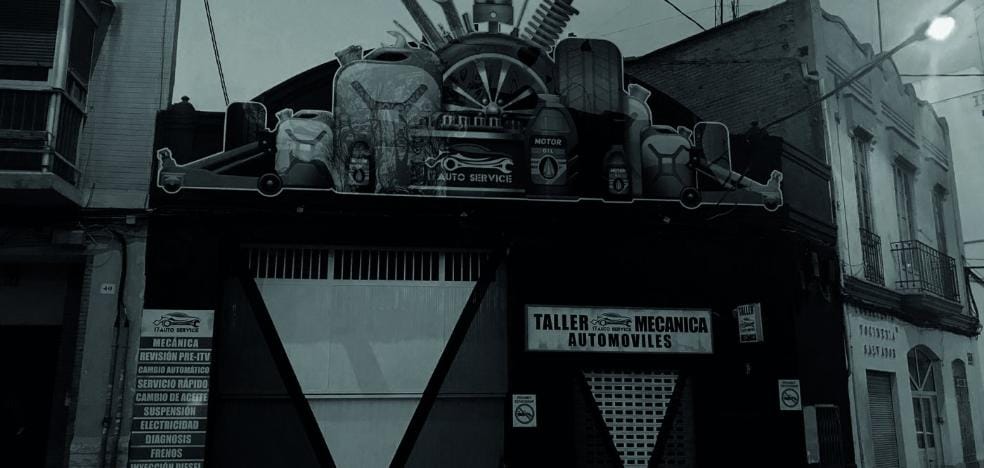On Saturday morning Carlos Rosique tells me that he will dedicate part of the weekend to taking pictures of some unique buildings in the city. After giving me a short list of potential objectives, I remind you that I could not miss the opportunity to go to La Ceramo, the beautiful tile factory with a neo-Mudejar facade built at the end of the 19th century in Benicalap. An old temple of internationally famous earthenware that has been vegetating for years in a painful state of preservation, waiting for the announced rehabilitation works to be carried out at once to turn the space into a cultural center.
After a while, back from Benicalap, my friend sent me, in addition to the photo of the ruined ceramic factory, a picture of another place with tradition. Unfortunately, of the old Montes Cinema, built in 1925 just a few steps from La Ceramo, there is not even the sign left. The small building on José Grollo street, which serves to mark the limit of the town engulfed by the nineteenth-century city, now houses, completely renovated, an automotive workshop after having recently been the headquarters of a haberdashery, a clothing store of opportunities and a dilapidated warehouse. A few months ago the tenants of the ground floor painted the facade black to cover the scars left by the passage of time, although on the striking semicircular finish of the building you could still guess the name of the old cinema. Today the last vestige of the cultural use of the space has been covered by a collage of automobile motifs that steals part of its history from the neighborhood.
Looking closely at the photograph, I can’t suppress a sigh of disgust. It is fortunate, of course, that a new business has established itself in the neighborhood. But, I think, perhaps the place would have deserved another use in accordance with its history and the legend of the character that gave it its name. If we were in a society somewhat more concerned with its popular culture (and football is undoubtedly part of it), the old cinema building, named in honor of Arturo Montes, could have housed an exhibition space dedicated to the footballer who contributed to place Valencia on the map of Spanish sport a century ago. A place of memory, in these times so conducive to the recovery of yesterday, to recreate, a few hundred meters from the Nou Mestalla, the fascinating story of the city of cheers and alirones by the hand of one of its totems.
De Montes, whose memory flutters vaguely in the memory of the average Valencian through the pure effort of our leading historians, dozens of pages have been written, some full of amusing hyperbole; others, of incomparable feats. The truth is that that man of almost two meters tall, whom popular devotion placed on the altar of valentina adoration, there is nothing, together with Blasco Ibáñez, Manuel Granero and Conchita Piquer, changed, with Eduardo Cubells, the course and the perspective of our sport. The journalist José Fernández ‘Caireles’, creator of the secular cult around Valencia, embossed the myth by dressing it with colorful epic epithets and spreading juicy anecdotes. The soccer player more than corresponded with his drive and charisma. You know: if Montes did not play, the fans asked for the return of the price of the tickets. Beyond the legend, there is an interesting record of record, marked by milestones (first goal in Mestalla, first goal in the Cup and a long etcetera) that still do not seem sufficient merits to have made him worthy of a canvas in Mestalla.
– .

